Fire-Fighting Competition
Given my interest in the simplicity of BEAM robotics, it might come as a surprise that my favorite robotics competition is among the most complicated. I mean, of course, fire-fighting.
Joe and I want to build an entry for the 2005 Games. We kept careful notes and watched closely. We still have absolutely no clue as to how these gentlemen coax their robots to success. Nevertheless, we have a deep appreciation.
|
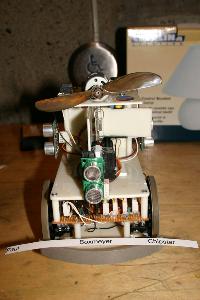
|
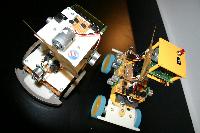
|
The first place winner was Paul Boxmeyer's Chipster. Chipster was a well thought out and constructed robot. The innovative aspect was the use of the UVTron sensor to locate the flame. As John Edwards pointed out to me, “traditionally the UVTron is only used to tell the robot that a candle is somewhere in the room.”
|
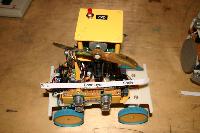
|
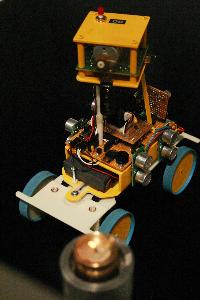
|
Paul Boxmeyer also brought his latest, Sprite. If fire-fighting was a race, Sprite would win it hands down. It was the fastest competitor and had an articulated waist for quick turning.
|
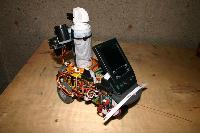
|
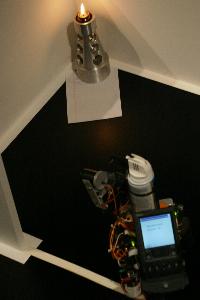
|
Bill Osmer's BPR-3 was interesting. It used compressed air for fire-extinction. Rather than a micro-processor, it used a Palm Pilot. This PDA used an PonTech controller to interface with the hardware.
|
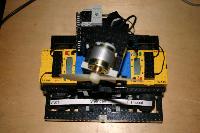
|
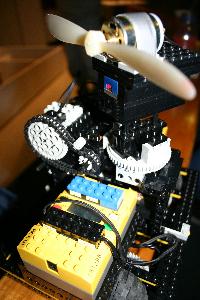
|
Flameout, by Bruce Sheridan, was made out of Legos. The strategy appealed to my BEAM sensibilities. Flameout backed up its square base into the wall after each turn, which straightened out the robot before it ran down the halls. This simple strategy avoided the most common failure in fire-fighting: getting stuck. Flameout came in forth.
|

|
|
Too bad there are not bonus points for aesthetics, for Rob Stehlik’s Stormtrooper looks great. To avoid getting stuck, it used a pair of line-following sensors to detect the doorway. Stormtrooper would then line itself up before proceeding to find and extinguish the flame.
|





